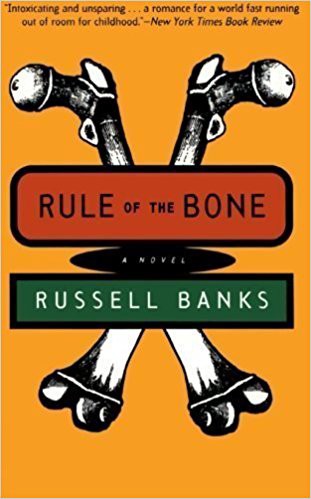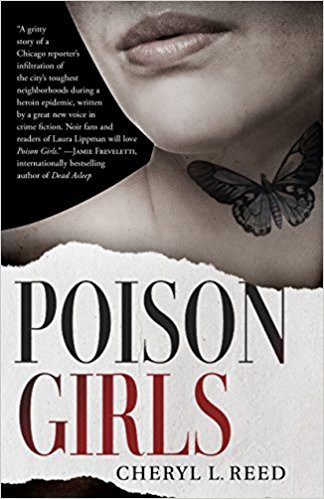Reading Lists
8 Fiction Books that Shed Light on the Opioid Crisis
To truly comprehend a drug crisis, we need to understand not only its facts but its stories

I n the last few years, the number of overdose deaths has escalated—there were 64,000 in 2016 alone—and much of this increase comes from drugs classed as “opioids.” This broad category describes a number of prescription medications that began to proliferate as doctors faced patients with hard-to-treat chronic pain, as well as street drugs such as heroin. In particular, heroin cut with an illicit form of fentanyl (a synthetic opioid) has caused a substantial number of accidental overdoses.
Drug crises are difficult because they involve any number of complex issues: health care limitations or failures, economic insecurity, personal identity, individual addiction, and so on. Many people start selling drugs because it’s the best job available. Others use drugs because of chronic pain. Some people can experiment with drugs without developing a habit; others can’t.

If you’re interested in the opioid crisis in particular or the larger ramifications of drug crises generally, there are many important nonfiction books on these issues. But fiction can also illuminate the underpinnings of the crisis. At its best, fiction brings together the personal and the political, the economic and the cultural. The books on this list illustrate the way structural shifts — from deindustrialization to various drug policy changes — are felt in everyday life. These works of fiction focus on different types of people from multiple eras facing various struggles, and ultimately provide us with a humane approach to the crisis we face today.

Junky by William S. Burroughs
William S. Burroughs’ often-overlooked first novel doesn’t feature the aesthetic experiments of his later work (such as Naked Lunch) but serves as an introduction to the world of heroin addiction in the 1950s. Though written in the first person, much of the book uses a distant, impersonal tone, detailing the terminology and practices of “junkies” from something like the vantage point of an anthropologist. However, Burroughs’ anxiety breaks through in affecting moments, when he worries that his personality and willpower have been erased by his addiction. In addition, he sees the rising tide of new drug legislation on the horizon, and fears laws that would punish him not just for using drugs but for being an addict, something not quantifiable or provable. It’s a trap many addicts face: distress because of their addiction, and panic at those that would imprison them for that very addiction.

Dopefiend by Donald Goines
Donald Goines was a remarkably popular and prolific mass-market fiction writer in the 1970s, selling millions of copies of the 16 books he published before he was murdered at the age of 37. Goines wrote slice-of-life novels set in urban areas and, unlike some of the other famous black writers of his time, had a largely black audience. In Dopefiend, Goines follows a formerly middle-class couple as they begin their descent into heroin addiction. The novel is full of brutal and difficult imagery, never shying away from the sordid details that come with prolonged heroin use. The novel provides a realistic account of the rationalizations and justifications people make as they gradually feel their lives slip out of their control.

A Scanner Darkly by Philip K. Dick
Set in the near future, Dick’s prescient novel focuses on a society segregated based on drug use, where the “straights” live in guarded apartment complexes, and the “dopers” are subject to the constant surveillance of a police state. The drug of choice for many of the dopers is “Substance D,” which is often mixed with heroin and inevitably leads to death (eerily similar to today’s crisis with fentanyl). Written in 1977 before the explosion of mass incarceration and income inequality, the novel nevertheless envisions a world where the punitive response to drug crises lead to these outcomes (though, on issues like race, it has its own blind spots).
Those Teenage Years When Everything Is New and Death Is Just Around the Corner

Rule of the Bone by Russell Banks
Set in the deindustrialized upstate New York of the 1990s, the novel features main characters who are economically precarious with few opportunities. Service sector work exists for the people lucky enough to get hired by the shopping mall or video rental store, but those jobs are scarce and don’t pay much. The 14-year-old protagonist begins selling drugs because he doesn’t see much opportunity in his future, but, even as he worries that he is becoming a criminal, he often reveals his innocence. A complex coming-of-age story, Rule of the Bone is Huckleberry Finn for the heroin era.

Jesus’ Son by Denis Johnson
In Johnson’s story collection, drugs are always in the background. In some stories, such as “Car Crash While Hitchhiking,” the narrative reads like a drug experience, with lapses in time, a dubious sense of reality, and moments of bizarre profundity. In the beautiful “Beverly Home,” the absence of drugs shapes the emotional arc of the main character, as he struggles to discover what “normal” life is without daily drug use.

Taipei by Tao Lin
While on book tour, the protagonist of Taipei takes a precise amount of drugs in order to stave off social anxiety. Opioids — such as oxycodone — are part of his regimen. However, he soon discovers that this drug regimen threatens to overtake his life. A lot of media coverage has focused on rural or working-class opioid use, but Taipei shows how common prescription drug abuse is among creative professionals in large American cities. Interestingly, the novel’s style is intentionally soporific, textually recreating the euphoric sedation that accompanies opiate use. Tao Lin stacks clause on top of clause in his sentences. After five or so lines, you often forget where the sentence started, and you feel briefly delirious. The novel’s style indicates fiction’s ability to induce feelings the reader might otherwise not understand.

Poison Girls by Cheryl L. Reed
Set in Chicago in 2008 (complete with oblique references to the charismatic “Hyde Park senator” running for president), Cheryl Reed’s noirish thriller is very much a product of our contemporary opioid crisis. The novel follows Natalie Delaney, a reporter for The Chicago Times, in her attempt to report a story about teenage girls who have consumed “poison” heroin. The poison is heroin cut with fentanyl, what we know now to be an often-lethal combination responsible for a large percentage of accidental overdoses. The novel’s plot twists make for an engaging page-turner that highlights the various institutions (such as the media and the police) affected by drug crises.

Marlena by Julie Buntin
The protagonist of Marlena moves from the suburbs of Detroit to a rural area in upper Michigan after her parents’ divorce. In this beautiful, desolate environment, she becomes friends with Marlena, who lives across the street. She begins to rebel for the first time in her life: she cuts class, starts a lifelong struggle with alcohol, and experiments with drugs. It’s a tragic coming-of-age story that examines friendship, rural despondency, and addiction with subtlety. In one of the most affecting moments, the main character watches as Marlena — who is “normally pathologically cool” — drops her oxycodone on the floor of their high school and scrambles to pick them up. Reflecting on this moment, the narrator’s words encapsulate the larger issues at play in the opioid crisis:
“Now it strikes me as a profoundly American thing — an epidemic that started as an abuse of the cure, a disease we made ourselves. But what did I know about America? Back then I’d been affected with a chronic political apathy, a symptom, maybe, of being part of a family that was always barely scraping by, conditioned to be wary of the system.”










